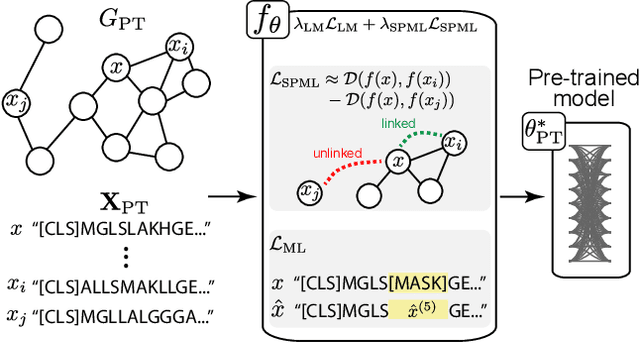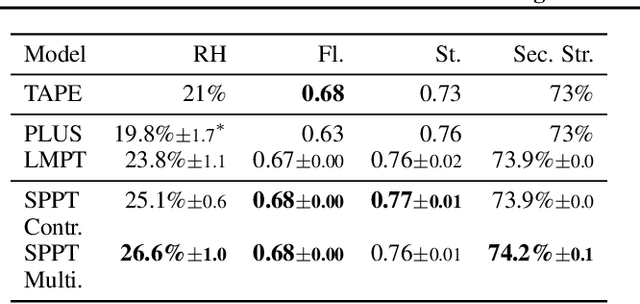Rethinking Relational Encoding in Language Model: Pre-Training for General Sequences
Paper and Code
Mar 18, 2021



Language model pre-training (LMPT) has achieved remarkable results in natural language understanding. However, LMPT is much less successful in non-natural language domains like protein sequences, revealing a crucial discrepancy between the various sequential domains. Here, we posit that while LMPT can effectively model per-token relations, it fails at modeling per-sequence relations in non-natural language domains. To this end, we develop a framework that couples LMPT with deep structure-preserving metric learning to produce richer embeddings than can be obtained from LMPT alone. We examine new and existing pre-training models in this framework and theoretically analyze the framework overall. We also design experiments on a variety of synthetic datasets and new graph-augmented datasets of proteins and scientific abstracts. Our approach offers notable performance improvements on downstream tasks, including prediction of protein remote homology and classification of citation intent.
 Add to Chrome
Add to Chrome Add to Firefox
Add to Firefox Add to Edge
Add to Edge